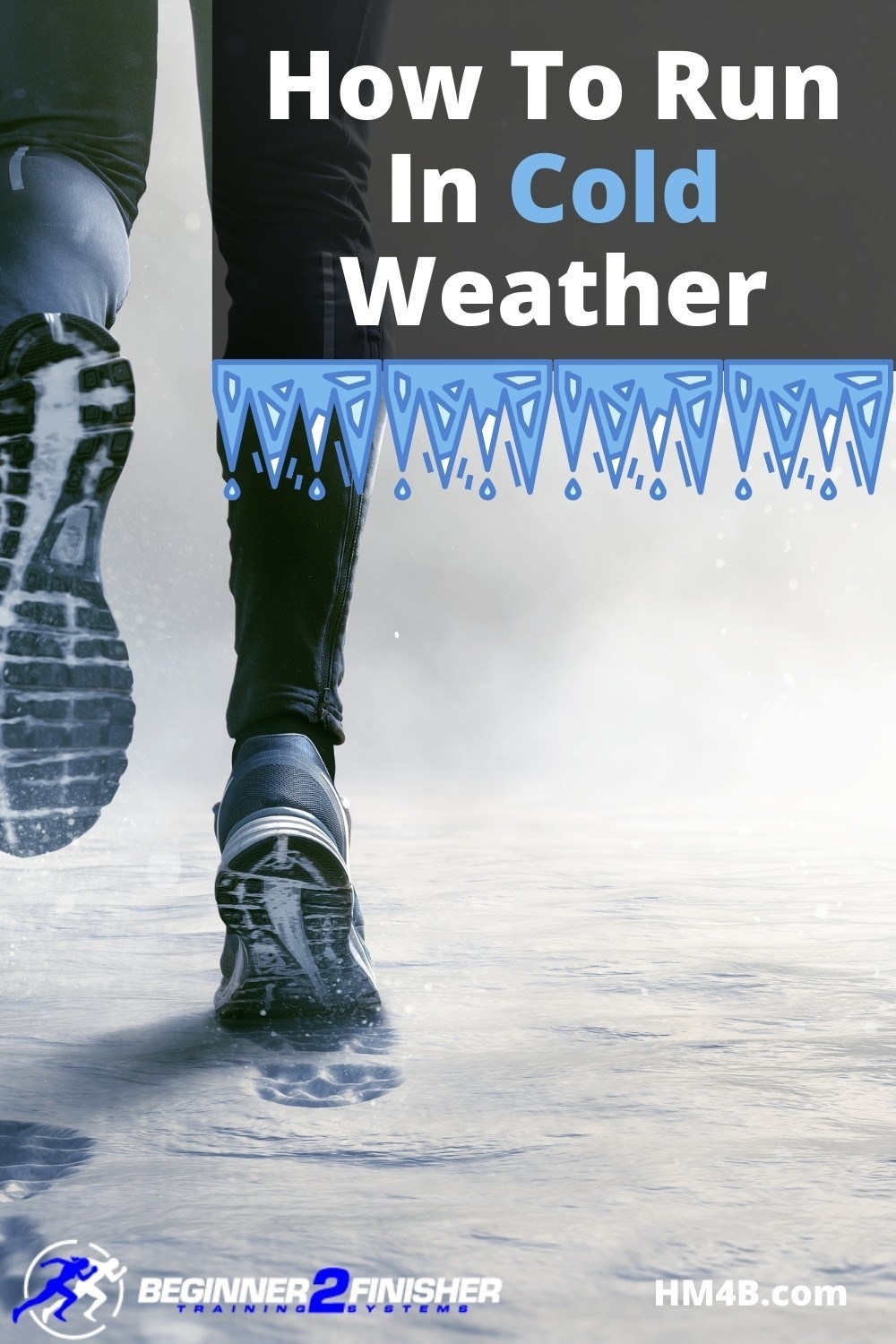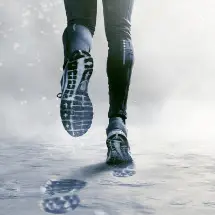How to Run in Cold Weather: A Beginner’s Guide
Being a good runner requires consistency. That means running even when the seasons change and it starts to get cold outside. Sure, you could continue running indoors on a treadmill during the winter months just to keep fit. But that’s not the same as the real deal of running out in the open.
In this article, we’re going to walk you through everything you need to know to run safely in cold weather and get the most benefits out of the process.
How Cold Is Too Cold To Run?
First of all, you must understand when it’s safe to run out in the cold and when it might get a bit dangerous to do so. As a general rule of thumb, you should not be outdoors running if temperatures go below -20 degrees Fahrenheit (-28.89°C).
Never guess temperatures, either. Before each run, make sure that you’re checking weather information in your local area to determine whether or not it’s safe for you to run outdoors.
Doing that is simple enough these days to check online or rely on a weather app on your smartphone. Plus, you can also check for any other weather-related risks to your runs, such as wet weather or things like hail.
It’s best not to take the temperatures lightly. Even though you may be dressed to stay warm, the fact remains that you’ll be exerting yourself physically while breathing in air that’s far too cold for your lungs.
So, even though you may have your heart set on running outdoors while it’s cold, always be prepared to take your workout indoors. If you think the weather is too cold, err on the side of caution and use a treadmill instead!
You’ll still have plenty of opportunities to run outdoors later.
How Should You Breathe When Running In Cold Weather?
No matter how warmly you may be dressed for your run, you’ll still breathe in large volumes of cold air into your lungs. That can be quite dangerous, which is why you need to be more mindful of how you breathe when running in cold weather.
For starters, stick to the basics: breathe in through your nose, and exhale through your mouth. Simply put, breathing this way allows the air to warm up slightly in your nostrils as it makes its way towards your lungs.
On top of that, you can also cover your face with something like a bandana, mask, or some kind of fabric. Doing that will give the air a chance to warm up slightly on its way into your body, as the material becomes something like a ‘filter’.
Lastly, you must manage the intensity of your run. Yes, you may be conditioned to run at high intensities under normal conditions. Still, a higher-intensity run means that your body will pull in much more air if the air is too cold.
So, stick to a medium or low intensity instead. As an added benefit, doing that will also reduce your overall risk of injury.
Related: How to Run in the Treacherous Snow and Ice – safely!
Does Running In The Cold Burn More Calories?
Yes, running in the cold burns more calories. The overall reason for that is simple: your body needs more energy to keep itself warm when it’s out in the cold, and burning calories is how it’ll do that.
Even if you were to stand still out in the cold, your body would end up burning more calories to keep itself warm. So, running in cold weather will require even more energy. Don’t forget: you’ll even burn calories to warm up the cold air you breathe in.
Still, it’s not just about staying warm. Running on snow-covered terrain is much more challenging than running on a flat road during the summer. That means your muscles will have to work much harder than ever before, resulting in more significant calorie burn.
Is It Safe For Your Lungs To Run In Cold Weather?
When running in cold weather, it’s essential to take things very slowly. Some experts believe that doing so can be damaging to your lungs in the long run.
Remember: the higher your run’s intensity, the more air your body will draw into your lungs. Even with a face-covering like a mask, the air may not warm up to a safe enough degree by the time it reaches your lungs.
To reduce the risk to your lungs, there are a few steps that you can take. Firstly, keep your face, nose, and mouth covered with a mask, bandana, or something similar. That will allow some of the air that you breathe to warm up, at least.
Next, be sure to do your warmup indoors before you go on a run. The warm, indoor air will give your lungs a chance to dilate and prepare themselves for the cold run you’re about to experience.
What Are The Benefits Of Running In Cold Weather?
Despite any risks, there are some clear benefits to running in cold weather. Above all, running in cold weather will supercharge your metabolism! That’s because of several factors at play simultaneously. For instance, the cold temperature forces your body to burn more calories to keep itself warm.
Besides that, scientists say that exercising in the cold helps your body convert its white fat to brown fat, the type that burns more calories even when you’re at rest!
Lastly, as mentioned earlier, running in cold weather terrain like snow adds more resistance, forcing your muscles to work harder overall.
What Are The Drawbacks Of Running In Cold Weather?
Cold weather running comes with its fair share of drawbacks. For starters, you’ll need to wear multiple layers to ensure that your body stays warm as you run. For many runners, that’s a massive change from wearing clothes that allow for more effortless movement and exposure to the air.
Aside from sweating under those clothes, you’ll be carrying much more weight throughout your run than usual.
Furthermore, running in cold weather can sometimes be dangerous. Firstly, places that experience cold climates tend to get dark very early. That can be a problem if you’re the kind of person who runs later in the day.
Also, roads and other surfaces may be wetter than usual in cold weather, increasing your injury risk.
Should I Limit My Time Spent Out In The Cold Running?
Yes, you should limit the time you spend running in the cold. Doing so will limit your lung’s exposure to cold air and minimize any harmful side effects that they might experience.
What Should You Wear When Running In Cold Weather?
It’s all about the layers! Be sure to put on workout clothes that allow you to retain your body heat throughout your run. Besides that, you must cover your face and your head as well. As mentioned before, a face covering will help to warm up the air you breathe in before it reaches your lungs.
Lastly, be sure to wear reflective or brightly-colored clothing if you’re running when it’s dark. That will ensure that you’re visible to other people, primarily cars if you’re running by the side of the road.
What About Cold Weather With Ice Or Snow? Do You Need Specials Gripping Shoes?
Yes! When running on icy or snow-covered terrain, it’s critical to use shoes that provide enough traction. Typically, these are running shoes that may have studs or spikes of some kind. Those kinds of shoes will reduce your risk of injury by preventing you from slipping on the ice.
What Should You Wear When You Run In The Rain?
Just like snow, rain presents its own challenges when it comes to getting your miles logged in for the week. To know how to bundle up in the rain check out: What Should I wear When I Run In The Rain.
Is your running getting harder instead of easier?
If you’ve suddenly felt your running mojo decrease and your running, simply put, is not getting any easier but harder instead. Check out: 13 reasons why your running is getting harder instead of easier.
| Help support me and subscribe to my YouTube channel. YouTube video - 30 ways to make your runs less painful! Coach Scott's Credentials:
|
To sign up for a FREE half marathon training schedule, log sheet, and pace predictor CLICK HERE.

Recommended gear for runners
Connect with me:
| facebook.com/BeginnerToFinisher/ |
References
https://www.vox.com/2017/12/23/16774320/exercise-in-cold-burn-more-calories
https://www.healthline.com/health/winter-running




12 thoughts on “How to Run in Cold Weather: A Beginner’s Guide”